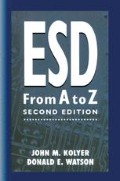Abstract
IL-4 induces down-regulation of CD14 expression on human monocytes only when the cells are cultured with serum. In serum-free cultures we failed to down-regulate CD14 by IL-4. Instead of serum, GM-CSF was required as a co-factor to restore the regulatory effect of IL-4 on CD14-expression. After 4 days of culture human monocytes were quantitatively CD14-negative as determined by flow-cytometry. On day 6, high amounts of CD14 molecules were detected in the SUP of these cultures, whereas intracellular immunofluorescence staining revealed no detectable CD14 in cytokine-treated monocytes. Thus, CD14 is lost by down-regulation (as shown by others) as well as by delivery into the medium. We previously hypothesized that dendritic cells may originate from monocytes. Our present finding support that one of the key markers, distinguishing monocytes/macrophages from dendritic cells, can be lost upon physiological stimuli.
Access this chapter
Tax calculation will be finalised at checkout
Purchases are for personal use only
Preview
Unable to display preview. Download preview PDF.
References
R.A. Musson, Human serum induces maturation of human monocytes in vitro, Am. J. Pathol. III: 331 (1983).
H.M. Najar, A.C. Bru-Capdeville, R.K.H. Gieseler, and J.H. Peters, Differentiation of human monocytes into accessory cells at serum-free conditions, Europ. J. Cell Biol. 51: 339 (1990).
Y. Akiyama, R. Griffith, P. Miller, G.W. Stevenson, S. Lund, D.J. Kanapa, Effects of adherence, activation and distinct serum proteins on the in vitro human monocyte maturation process. J. Leukoc. Biol. 43: 224 (1988).
R.P. Lauener, S.M. Goyert, R.S. Geha, and D. Vercelli, Interleukin 4 down-regulates the expression of CD14 in normal human monocytes, Eur. J. Immunol. 20: 2375 (1990).
J. Ruppert, D. Friedrichs, H. Xu, and J.H. Peters, IL-4 decreases the expression of the monocyte differentiation marker CD14, paralleled by an increasing accessory potency, Immunobiol. 182: 449 (1991).
S.D. Wright, R.A. Ramos, P.S. Tobias, R.J. Ulevitch, and J.C. Mathison, CD14, a receptor for complexes of lipopolysaccharide (LPS) and LPS binding protein, Science 249: 1431 (1990).
V. Bazil, M. Baudys, I. Hilgert, I. Stevanova, M.G. Low, J. Zbrozek, and V. Horejsi, Structural relationship between the soluble and membrane surface glycoprotein CD14, Molec. Immunol. 26: 657 (1989).
P.J. Morissey, K.H. Grabstein, S.F. Reed, and P.J. Conlon, Granulocyte/macrophage colony stimulating factor: a potent activation signal for mature macrophages and monocytes, Int. Arch. Allergy Appl. Immunol. 88: 40 (1989).
J.M. Alvaro-Garcia, N.J. Zvaifler, and G.S. Firestein, Cytokines in chronic inflammatory arthritis. VI. Granulocyte/macrophage colony stimulating factor-mediated induction class II MHC antigen on human monocytes: a possible role in rheumatoid arthritis, J. Exp. Med. 170: 865 (1989).
D. Metcalf, The granulocyte-macrophage colony stimulatory factors. Science 229: 16 (1985).
M.J. Elliot, M.A. Vadas, J.M. Eglington, L.S. Park, L. Bik-To, G. Cleland, S.C. Clark, and A.F. Lopez, Recombinant human interleukin 3 (IL-3) and granulocyte-macrophage colony-stimulating factor (GM-CSF) show common biological effects and binding characteristics on human monocytes, Blood 74: 2049 (1989).
J.R. Gamble, M.J. Elliott, E. Jaipargas, A.F. Lopez, and M.A. Vadas, Regulation of human monocyte adherence by granulocyte-macrophage colony-stimulating factor, Proc. Natl. Acad. Sci. USA 86: 7169 (1989).
N.A. Nicola and M. Vadas, in: “Oncogenes and Growth Factors,” R.A. Bradshaw and S. Prentis, eds., Elsevier Science Publishers, New York (1987).
Author information
Authors and Affiliations
Editor information
Editors and Affiliations
Rights and permissions
Copyright information
© 1993 Springer Science+Business Media New York
About this chapter
Cite this chapter
Ruppert, J., Ostermeier, D., Hinrich Peters, J., Schütt, C. (1993). Down-Regulation and Release of CD14 On Human Monocytes by IL-4 Depends on the Presence of Serum Or GM-CSF. In: Kamperdijk, E.W.A., Nieuwenhuis, P., Hoefsmit, E.C.M. (eds) Dendritic Cells in Fundamental and Clinical Immunology. Advances in Experimental Medicine and Biology, vol 329. Springer, New York, NY. https://doi.org/10.1007/978-1-4615-2930-9_47
Download citation
DOI: https://doi.org/10.1007/978-1-4615-2930-9_47
Publisher Name: Springer, New York, NY
Print ISBN: 978-1-4613-6272-2
Online ISBN: 978-1-4615-2930-9
eBook Packages: Springer Book Archive

